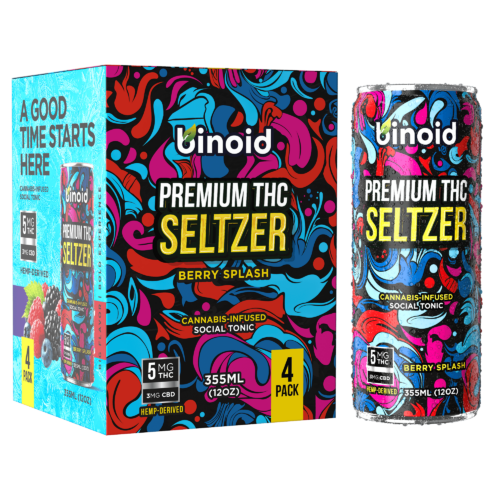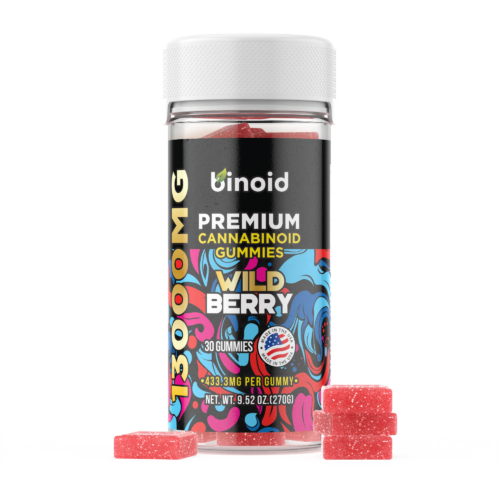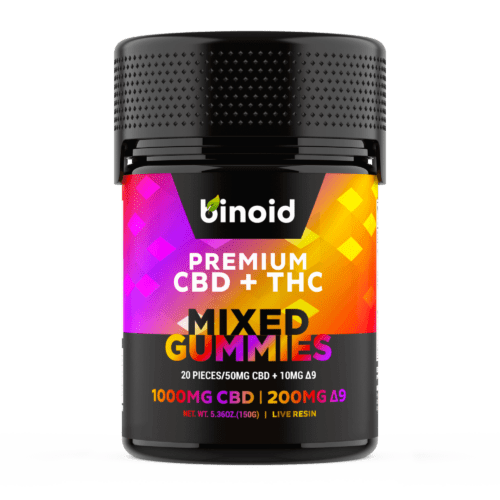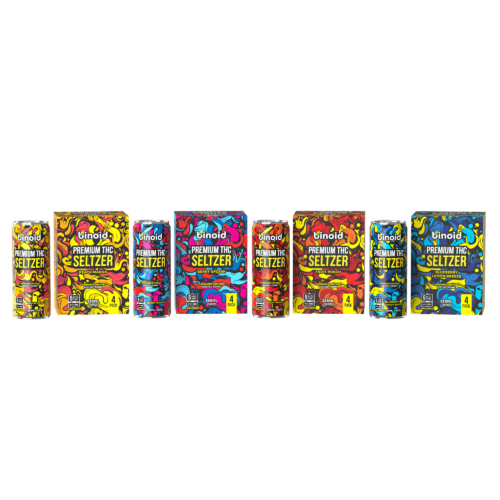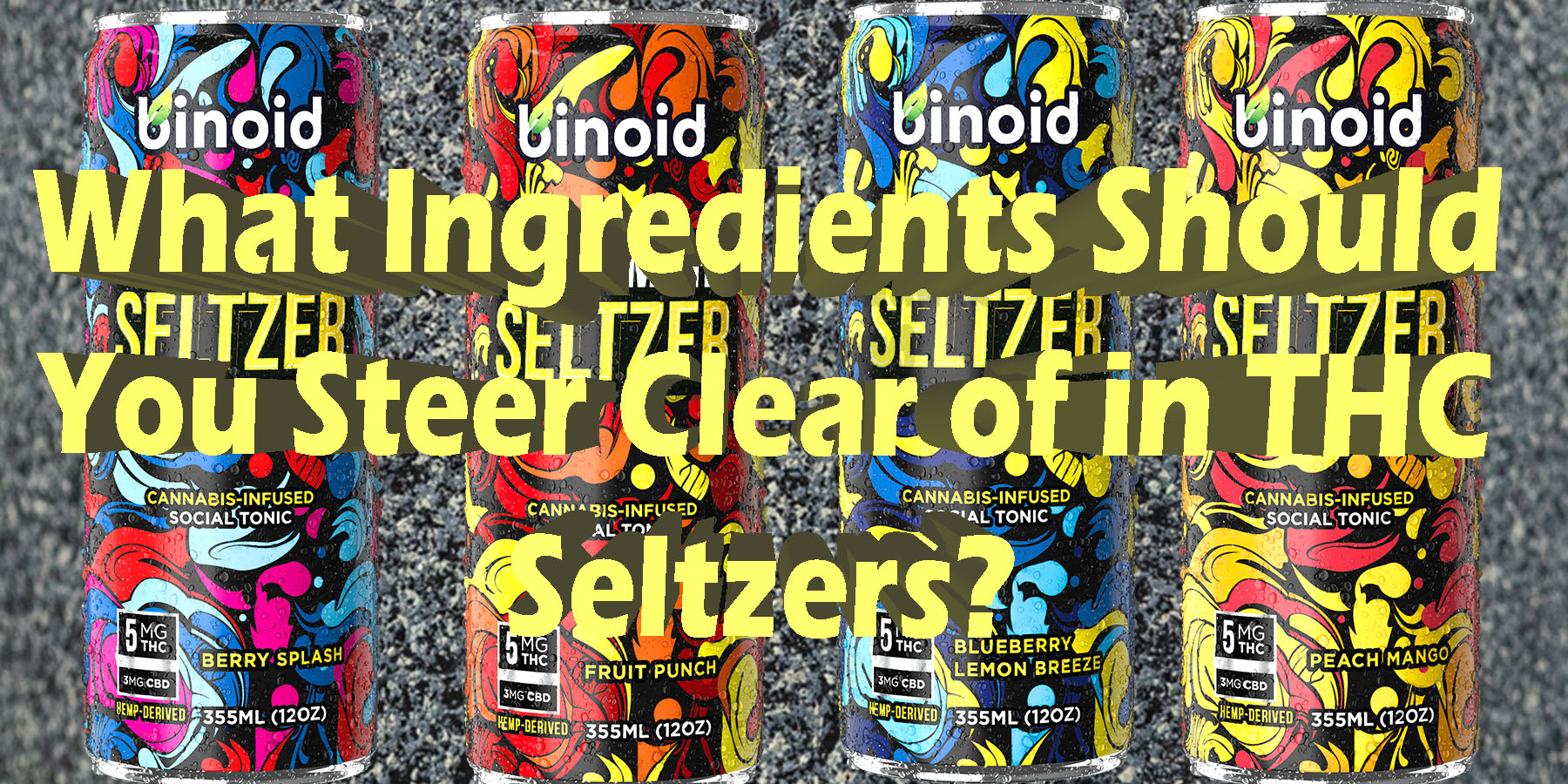
What Ingredients Are Bad In THC Seltzers?
In an era of unprecedented consumer awareness, the simple act of reading an ingredient label has become a modern ritual. We are a generation of educated shoppers, turning over boxes of cereal, jars of sauce, and cartons of milk to decipher their contents, seeking out what is pure and steering clear of what is artificial. This wellness-driven curiosity is now bubbling up in one of the most exciting new beverage categories: THC-infused seltzers.
As we reach for these cans that promise a clean, refreshing journey to a state of bliss, it’s only natural to ask, “What’s actually inside?” The answer lies in that small, printed list on the back of the can, a blueprint that separates a truly premium product from a less desirable imitation. Learning to read this label is the key to ensuring your moment of euphoria is as clean as the crisp, clear liquid itself.
To Buy THC Seltzers Click Here
Recommended products
What are THC Seltzers?
To properly scrutinize the ingredients of a THC seltzer, we must first understand the product’s fundamental identity and its appeal. At its core, a THC seltzer is a carbonated water beverage that has been infused with a precise, measured dose of Tetrahydrocannabinol (THC) – the primary psychoactive compound found in the cannabis plant. These drinks are celebrated for what they typically don’t contain: sugar, gluten, significant calories, or artificial coloring. Their identity is intrinsically linked to the “clean label” movement, offering a simple and transparent alternative to both sugary sodas and alcoholic beverages. This minimalist ideal is the primary reason for their meteoric rise among discerning, health-conscious consumers who are seeking the blissful effects of THC in its purest beverage form.
The creation of a high-quality THC seltzer is a testament to the advancements in modern food science, where the goal is to preserve the purity of the core ingredients. The process begins with water that has often undergone multi-stage filtration methods like reverse osmosis to ensure it is completely free of impurities that could affect the taste. This purified water is then carbonated with clean, beverage-grade CO2 to create the signature effervescence.
The most critical step is the infusion of THC. Because THC is an oil, a technology called nano-emulsion is used to create a water-soluble form. This involves using highly purified cannabis distillate, ensuring the final THC infusion is a tasteless, colorless, and stable ingredient that blends seamlessly and clearly into the water base without the need for artificial binders or stabilizers.
Now, the effects of a THC seltzer are often described as being as “clean” as its ingredient list. Because these beverages are typically free of sugar, caffeine, or other stimulants, the user is able to experience the effects of the THC in a very direct and unadulterated way. The feeling is frequently characterized as a clear-headed, light, and manageable buzz, a gentle uplift in mood that avoids the heavy, foggy, or sluggish sensations that can sometimes be associated with other, more complex cannabis products. The fast-acting nature of the nano-emulsified THC, which allows for an onset of effects in as little as 15 minutes, further contributes to this sense of control and clarity, as users can easily gauge their experience in real-time.
The primary audience for THC Seltzers is composed of individuals who are, by their nature, ingredient-conscious. This includes wellness-minded consumers who are actively seeking out products with clean labels and natural components as part of a holistic approach to their health. It also includes the large and growing “sober curious” demographic, who are looking to replace alcoholic beverages with an alternative that is free from the sugar, calories, and next-day hangover associated with alcohol. The appeal to this audience is not just the euphoric feeling the seltzer can provide, but the peace of mind that comes from consuming a product that is perceived as simple, pure, and transparent.
Recommended products
A List of Ingredients to Steer Clear of in THC Seltzers
The beauty of the ideal THC seltzers lies in its simplicity. However, as the category’s popularity has exploded, the market has been flooded with a wide array of products, not all of which adhere to this minimalist ethos. In an effort to cut costs, improve shelf stability, or create more intense flavors, some brands may introduce additives that discerning consumers prefer to avoid.
Becoming a savvy label-reader is your best defense, allowing you to sift through the options and choose a product that aligns with your wellness goals. This section serves as a guide to help you identify these less-desirable ingredients, empowering you to ensure that your refreshing path to relaxation is as clean and natural as possible. The following chart details some of the common ingredients you might want to steer clear of when selecting your next THC seltzer.
|
Ingredient to Avoid |
Why You Might Steer Clear of It |
How it Can Detract from the Seltzer Experience |
|---|---|---|
|
Artificial Sweeteners (e.g., Aspartame, Sucralose, Acesulfame Potassium) |
These are zero-calorie, synthetic sugar substitutes created in a lab. While approved by regulatory bodies, many health-conscious individuals choose to avoid them due to ongoing debates about their long-term health implications. Some people also report experiencing an unpleasant chemical aftertaste, headaches, or digestive discomfort from these compounds. |
A core appeal of seltzer is its clean, crisp taste. Artificial sweeteners can impart a cloying, distinctly chemical aftertaste that lingers on the palate, undermining the refreshing quality of the beverage and making it taste less natural and premium. |
|
Artificial Colors (e.g., Red 40, Yellow 5, Blue 1) |
These dyes are derived from petroleum and are used for purely cosmetic purposes to give a beverage a vibrant, unnatural color. They provide no nutritional value or flavor. Concerns have been raised about their potential to cause adverse reactions in sensitive individuals, leading many consumers to prefer products colored naturally with fruit and vegetable extracts. |
THC seltzers are celebrated for being clear and pure. The addition of a bright, synthetic color can make the product look more like a cheap, sugary soda than a sophisticated wellness beverage, cheapening the overall experience and signaling a lower-quality formulation. |
|
Chemical Preservatives (e.g., Sodium Benzoate, Potassium Sorbate) |
These are chemicals added to beverages to prevent the growth of mold, yeast, and bacteria, thereby extending shelf life. However, they are not necessary in a properly canned and pasteurized seltzer. Some studies have shown that under certain conditions, sodium benzoate can form trace amounts of benzene, a known carcinogen. |
The presence of chemical preservatives can sometimes be detected as a subtle, slightly salty, or chemical taste in the background. For a drink that is supposed to be clean and simple, this can be an undesirable distraction that detracts from the pure, intended flavor of the seltzer and its natural fruit essences. |
|
Artificial Flavors |
This is a broad term for proprietary chemical mixtures designed in a lab to mimic natural tastes. A single “artificial flavor” can be composed of dozens of synthetic compounds. Consumers who prioritize a natural diet often steer clear of these in favor of products flavored with real fruit extracts for a more authentic and cleaner taste profile. |
Artificial flavors often have a one-dimensional, overpowering, and “candy-like” quality that lacks the nuance of real fruit. This can make the seltzer taste cheap and cloying, a stark contrast to the subtle, refreshing, and authentic taste provided by high-quality natural fruit essences. |
|
Propylene Glycol (PG) |
This is a synthetic liquid substance that is sometimes used as a solvent or carrier for flavors in beverage production. While the FDA considers it “generally recognized as safe” (GRAS) for consumption, it is also known for its use in industrial applications like antifreeze, a fact that makes many consumers uncomfortable. |
While generally tasteless in small amounts, the knowledge that you are consuming a synthetic industrial solvent, however safe it is deemed, can detract from the psychological experience of enjoying a “clean” and “natural” wellness beverage. Discerning consumers often prefer products that use more natural carriers. |
|
High-Fructose Corn Syrup (HFCS) |
While uncommon in products marketed as “seltzers,” some lower-quality “sparkling THC drinks” may use HFCS as a cheap sweetener. It is a highly processed, artificial sweetener that many health-conscious consumers actively avoid due to its association with various negative health outcomes in mainstream nutritional science. |
The inclusion of HFCS immediately disqualifies a beverage from being a true seltzer. It results in a heavy, sugary, and syrupy drink, completely undermining the light, crisp, and refreshing experience that is the hallmark of the seltzer category. |
Recommended products
A List of Good Ingredients Found in THC Seltzers
On the brighter side of the ingredient label, many premium and forward-thinking THC seltzers brands are leaning into the “clean label” movement with enthusiasm. For these companies, a simple and high-quality ingredient list is a badge of honor, a direct signal to consumers of their commitment to creating a superior product. Discovering these thoughtful additions on a label can provide peace of mind and guide you toward a truly exceptional beverage experience.
These are the components that contribute to a delicious, authentic taste and align with a modern, health-conscious lifestyle. Seeking out seltzers that feature these ingredients is the best way to ensure your journey to euphoria is as pure as the bubbles in your can. The following chart details some of the high-quality ingredients you should be happy to find.
|
Good Ingredient to Find |
Why It’s a Good Sign |
How it Contributes to the Seltzer Experience |
|---|---|---|
|
Natural Flavors / Natural Fruit Essences or Extracts |
This indicates that the flavor of the seltzer is derived directly from real plant materials, such as fruits, spices, or herbs. It is a clear sign that the brand has opted for authentic taste over synthetic, lab-created chemicals. The term “extract” or “essence” often signals a higher quality and more concentrated natural source. |
This provides a genuine, nuanced, and authentic flavor profile. A “natural lime flavor” will taste more like a real lime—with all its subtle complexities—than an artificial one, resulting in a more sophisticated, premium, and refreshing taste experience from start to finish. |
|
Real Fruit Juice or Puree (used sparingly) |
While not common in zero-calorie seltzers, some brands add a small splash of real fruit juice or puree for flavor and color. Seeing “raspberry puree” or “real lemon juice” on a label is a definitive sign of a premium, natural formulation. It shows the brand is committed to using real food ingredients rather than just flavorings. |
A small amount of real fruit juice can add a layer of authentic body, color, and a more rounded, less sharp flavor than essences alone. It can make the seltzer feel more like a craft beverage, enhancing its overall sensory appeal and providing a more satisfying taste. |
|
Natural, Zero-Calorie Sweeteners (e.g., Stevia Leaf Extract, Monk Fruit Extract) |
For seltzers that offer a hint of sweetness without the sugar or calories, these plant-derived sweeteners are the premium choice. Unlike their artificial counterparts, stevia and monk fruit are extracted from natural sources and are favored by the wellness community. Their presence signals a health-conscious formulation. |
These sweeteners can provide a pleasant touch of sweetness to balance any tart fruit flavors without adding calories or the chemical aftertaste associated with artificial options. This allows for a guilt-free, lightly sweetened experience that still feels clean and natural on the palate. |
|
Natural Colors (from Fruit/Vegetable Juice) |
If a seltzer has a tint of color, the premium way to achieve this is with natural sources. Seeing “fruit and vegetable juice (for color)” or specifically “beet juice extract” or “beta-carotene” on the label is a positive sign. It means the brand is avoiding synthetic, petroleum-based dyes like Red 40 or Yellow 5. |
Natural coloring agents provide a subtle, more authentic-looking hue that signals a natural product. This aligns with the clean and pure aesthetic of the seltzer category, enhancing the visual appeal without resorting to artificial additives that can feel out of place in a wellness-oriented beverage. |
|
Citric Acid |
While it sounds like a chemical, citric acid is a naturally occurring acid found in citrus fruits like lemons and limes. It is commonly used in beverages to provide a pleasant, crisp tartness that enhances fruit flavors and to act as a mild, natural preservative that helps maintain freshness without the need for harsher chemical options. |
Citric acid adds a bright, zesty “kick” to the seltzer that balances the fruit flavors and enhances the overall refreshing quality of the drink. It contributes to a clean finish and is a standard, trusted ingredient in the high-quality beverage industry, signaling a well-crafted product. |
|
Adaptogens and Nootropics (e.g., L-Theanine, Ginseng) |
A growing trend in the premium seltzer space is the addition of functional ingredients designed to complement the effects of THC. L-Theanine, an amino acid from green tea, is often added to promote a state of calm focus. Seeing these ingredients indicates a sophisticated, “next-generation” product designed for a targeted experience. |
These functional ingredients can work synergistically with the THC to create a more nuanced and targeted feeling. For example, the addition of L-Theanine can help smooth out the experience, leading to a more focused and serene buzz, elevating the beverage from a simple THC delivery system to a true functional wellness drink. |
|
Hemp-Derived Terpenes |
Some “craft” seltzers will add back specific cannabis-derived or botanical terpenes to their formula. Terpenes are the aromatic compounds that give different cannabis strains their unique scent and are believed to steer the effects. Seeing specific terpenes listed, like limonene or myrcene, signals a highly sophisticated, artisanal product. |
The inclusion of terpenes can add an extra layer of authentic cannabis aroma and flavor, and more importantly, it can help shape the feeling of the beverage. A blend with limonene might create a more uplifting experience, while one with myrcene could feel more relaxing, offering a more customized path to your desired state of bliss. |
Bottom Line: There are Bad and Good Ingredients to Be Mindful of in THC Seltzers
In the vibrant and effervescent world of THC seltzers, true quality is revealed not on the front of the can, but in the fine print on the back. As consumers, the power to shape the market and to safeguard our own well-being lies in our commitment to being informed. The journey toward a desired state of bliss or relaxation should be a clean one, and by learning to read and understand an ingredient label, you become the confident gatekeeper of your own experience.
Choosing a beverage is no longer just about the flavor or the dose; it is a declaration of your personal standards. By seeking out the good and steering clear of the unnecessary, you ensure that every refreshing sip is one you can feel truly good about, both in mind and in body.

